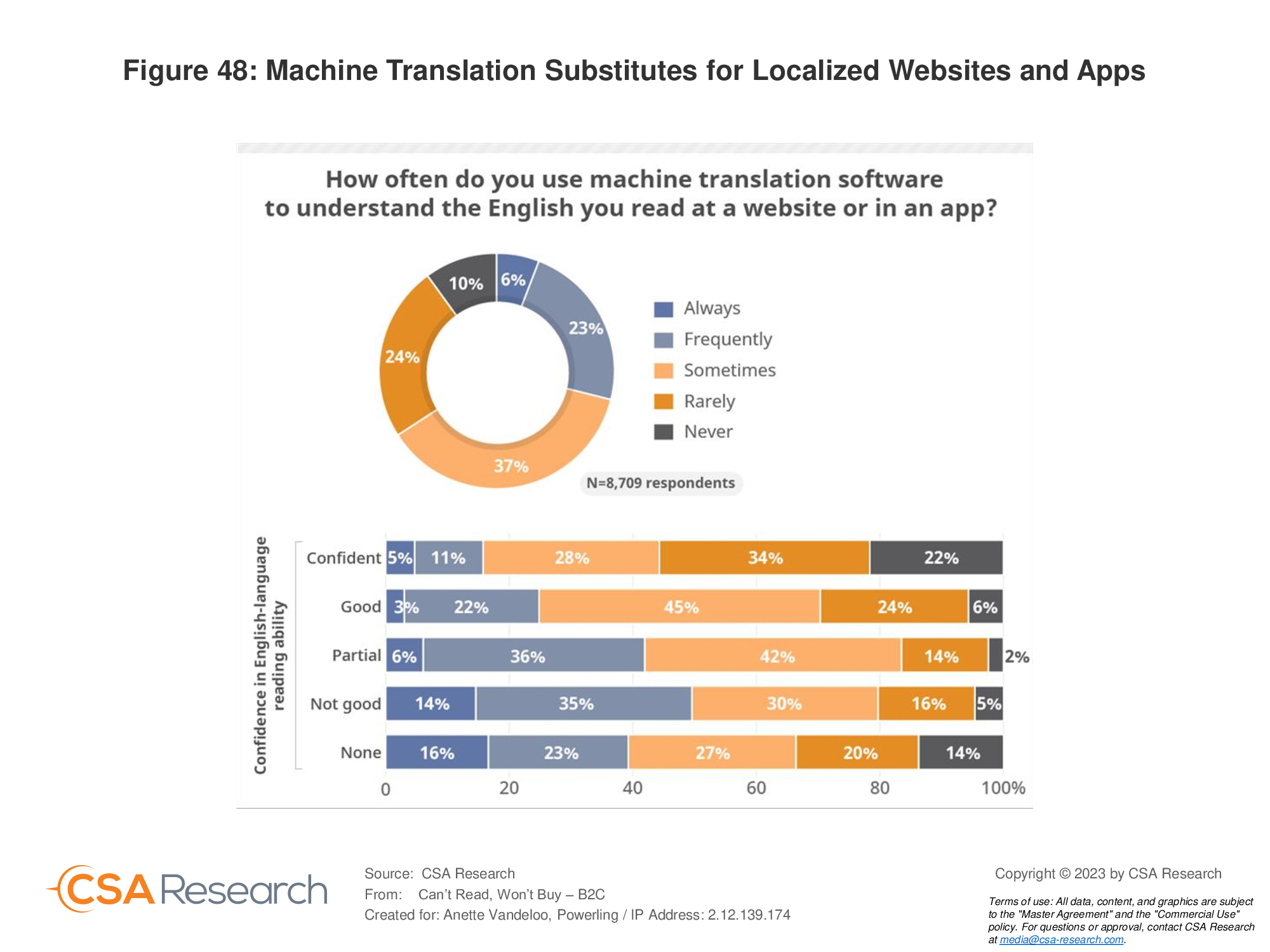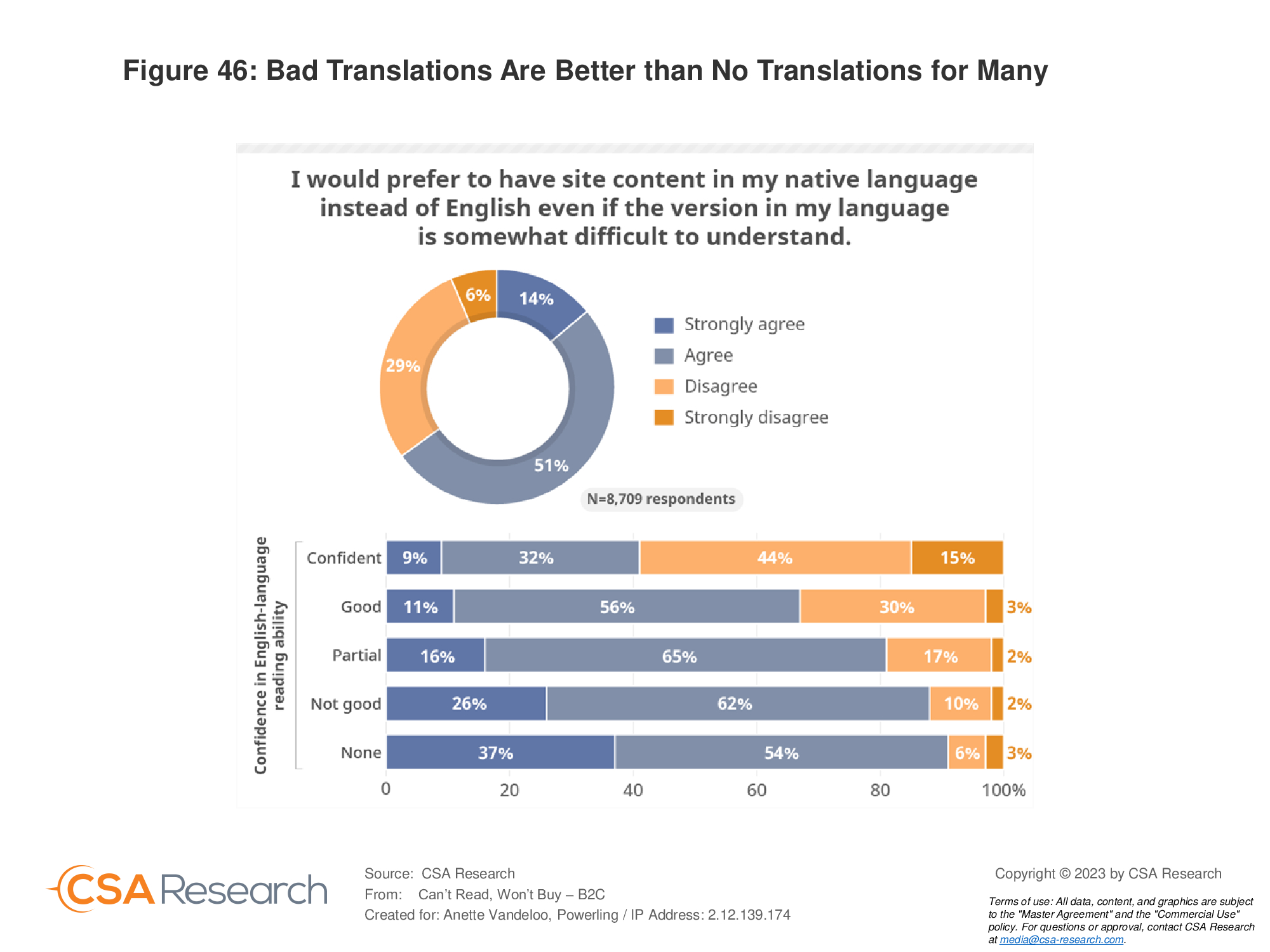If you're looking to expand your business globally, you need to be able to communicate with your potential customers in their native language. But what do you do if you don't speak their language? You can't just rely on Google Translate—you need to make a real connection with your customers. Here's how to do it.
What do the numbers say? Hard Data:
In a survey conducted by Common Sense Advisory, 8709 consumers in 29 countries were interviewed in their native languages to understand their preferences for a customer experience in their mother tongue versus a foreign language such as English. Here are some of the findings:

If customer care is offered in their language, 75% of people think they will be more likely to purchase a product from the same brand again.
Even if the website or application is not translated, 73% of customers prefer products with reviews in their language.

Websites with multiple languages on the same page are accepted by 67% of users.
Even if the content is of low quality, 65% of users prefer websites in their native language.
Project underwear from Nimdzi showed that 9 out of 10 global users will ignore a product if it’s not in their native language (Nimdzi Research, 2020)
In addition to increasing the possibility that a customer will buy your product or service, presenting information about it on your website in the consumer's language creates the ideal setting for forging better customer relationships. Everyone enjoys being addressed in their own language. It demonstrates to the client the concern the business has for its needs and provides confidence that the customer will understand everything.
Translation vs localization
Marketers spend a lot of time and energy creating the best customer experience possible on their website, but really think about how language will affect the customer. Many companies overlook the critical significance of connecting with their global audience through content that speaks to them on an emotional level rather than just through translation. By localizing, which means to adapt the translated content to for the mood, companies are able to provide a full language experience that communicates their brand, reputation, and trustworthiness.What Should you translate? How to choose which languages to translate into?
How well you can rank well on search engines determines whether your business will be successful online. Ideally, you should translate and localize all the content on your site, like text, including your metadata, phone numbers, pictures, colors… After doing all of this, you should arrange your website such that search engine bots can quickly crawl it. The search engine rating of your e-commerce website may benefit from this.Now that, we know the importance of translating and localizing your content to reach a global audience. The next logical question is in what language should internationalize into? Hopefully, it shouldn't be complex to select which languages to include on your e-commerce website. Where does the business now operate? Where will stores sell tomorrow? The secret is to conduct an analysis of both your current clientele and the markets you want to enter. You can learn more here, “What Matters Most in Selecting Languages? How to go international by translating and localizing.”
Note: If your website does not have an English option, the priority would be to translate to English. More than 1.5 billion individuals worldwide are learning English as a second language. Many of them go to websites in English.
Realize the potential of pluricentric languages
Many of the languages in our survey set have prospects outside the one country we studied. French, for instance, is widely spoken in 52 nations, while Spanish is in 29. As a result, 28 additional areas, including the United States, where Spanish is widely spoken, might utilize your website in Spanish. It goes without saying that successfully localizing a website for another country speaking the same language frequently necessitates additional localization, for example on taxation, privacy, and payment methods, but it's a start.
Going Global
According to the rests of the survey, there should be no doubt as to the necessity of localizing websites, applications, and product information if you want to increase your sales of goods and services to customers around the world.Most non-native speakers find that using their mother tongue when consuming information and making judgments is more comfortable. Businesses that meet consumer's demand for localized content have a greater chance of selling products and services and gaining devoted, repeat customers. An English-only LX will only get you so far, regardless of how you view the content funnel of the customer experience or the expansion of your business into a new region. To attract and retain your consumers of the future, start making plans today to integrate a more comprehensive linguistic experience to complement your present CX.
Powerling helps companies to go global. We go beyond a direct translation to make sure your work delivers the proper impact in the target market. Your content can either be adapted or completely rewritten in the local language to reflect the original message. The result is often a mix of this, including new content, adapted content and imagery, and direct translation.
List of countries surveyed: Germany, Brazil, China, Korea, Denmark, Egypt, Slovakia, Spain, Finland, France, Greece, India, Indonesia, Italy, Japan, Mexico, Norway, the Netherlands, Poland, Portugal, the Czech Republic, Romania, Russia, Sweden, Taiwan, Thailand, Turkey, Slovakia, the United States (Spanish) and Vietnam.

